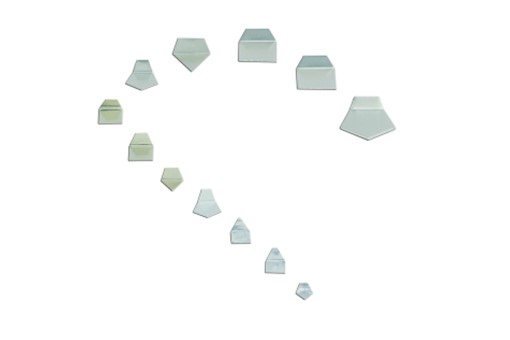Rosselkhoztsentr of Tatarstan explained how to effectively deal with diseases of winter crops and avoid crop losses

Specialists of the Rosselkhozcenter of Tatarstan assessed the state of crops in the republic as of May 19, 2022. During the week, crops of winter crops were selectively examined on an area of 16.6 thousand hectares (in total, 130.7 thousand hectares were examined on an accrual basis).
According to the report prepared based on the results of phytomonitoring, winter crops are in the tillering phase - entering the tube.
Experts warned that when sunny warm weather sets in, winter crops will begin to be populated by cereal aphids, thrips, leopard bugs, and harmful bugs. Therefore, farmers should keep crops under control and, if the threshold of economic harmfulness of these insects is exceeded, carry out insecticidal treatments.
“In order to identify plant diseases, our specialists randomly examined 16,000 hectares of winter crops in a week. The beginning of the appearance of leaf diseases on crops was noted. Powdery mildew was found on 2,000 ha, or 12.5% of the surveyed areas, and affected plants averaged 2.7%. Septoria was detected on 1.3 thousand hectares, or 8.1% of the surveyed areas," said Guzel Khusainova, deputy HEAD of the Rosselkhozcenter branch in the Republic of Tatarstan.
As the institution explained, when plants are affected by powdery mildew, the assimilation surface of the leaves decreases, chlorophyll is destroyed, the number of stems decreases, premature drying of the leaves occurs, earing is delayed, the grain content of the ear decreases, and the quality of grain decreases. In this case, the crop shortage can reach 15–35%.
Infection with septoria leads to a slowdown in plant growth, premature drying of the leaves, a decrease in the length and grain content of the ear, grain frailty, and if the stem nodes are damaged, to lodging of plants. For these reasons, crop losses can be 10–15%.
Against these diseases, it is necessary to carry out fungicidal treatments of plants: on thickened crops; in the tillering phase - the beginning of budding at 3–5% of plants infestation; according to the flag leaf - earing when the disease appears on the 3rd leaf from the top in 50% of plants. In the tillering phase, it is recommended to combine treatments with herbicides.
With a weak development of leaf diseases, experts recommend treating with biological fungicides Rizoplan, Zh; Pseudobacterin-2, G; Fitosporin-M, J. and others. To increase the immunity of plants during fungicidal treatment, add microbio-fertilizers and micro-fertilizers (Humate "Healthy Harvest") to the tank mixture. In case of exceeding the economic threshold of harmfulness of diseases in the flag leaf phase, it is necessary to treat with fungicides from the "List of pesticides and agrochemicals permitted for use on the territory of the Russian Federation": Kolosal Pro, KME; Rex Plus, SE; Falcon, KE; Alcor, KS; Atlant, KE; Title Duo, KKR or other approved fungicides.
“Also, our specialists examined winter crops on an accrual basis of 56.3 thousand hectares to identify root rot. This disease was detected on 13.6 thousand hectares, or 24.1% of the surveyed areas,” said Guzel Khusainova.
The prevalence of root rot is on average 1%. The maximum spread of root rot - 1.2% - was noted in the Baltasinsky municipal district on an area of 155 hectares of winter rye.
As noted in the institution, with the development of this disease, crop losses occur due to the loss of seedlings, a decrease in productive tillering, and the number of grains in an ear. The mass of 1000 grains is reduced by 32–35%, its quality is deteriorating. And seed germination can be reduced by 40%.
For the prevention of this disease, it is recommended to carry out the correct selection of a disinfectant; use disease-resistant varieties of cereals; observe crop rotation and sowing dates; apply macro- and microfertilizers; conduct a microbiological analysis of the soil.
Branch of the Federal State Budgetary Institution "Rosselkhoztsentr" in the Republic of Tatarstan.
Read together with it:
- He crawled to the icon with prayer. The true story of a man who overcame drug addiction.Alexander Ovchinnikov. Topic News. Our project's hero was a drug addict for many years. The thought that this was a dead end never left him, but his addiction proved stronger. One day, when he could no longer walk, he crawled to an icon in prayer. This became his first step toward a new life. Today, he heads a charity center that helps those who have given up hope and are unable to quit ALCOHOL an...
- Rosselkhoznadzor has banned meat imports from two Belarusian enterprises due to violations.In addition, three other Belarusian producers are now subject to strict laboratory monitoring due to initial deviations: azithromycin was found in poultry MEAT from Druzhba Poultry Farm, and the pesticide imidacloprid was found in honey from Pchalyar Polachchyny Farm. Powdered MILK from Luninetsky Dairy Plant was also found to containcoli bacteria . These measures were taken at the request of the ...
- Kyiv imposed sanctions against Dmitriev and Russia's negotiator in Istanbul.The sanctions also affected Kirill Dmitriev, the first deputy minister of education and HEAD of the Ministry of Agriculture of RUSSIA and the former head of the Constitutional COURT of Ukraine.Ukrainian President Volodymyr Zelenskyy has imposed new sanctions against Russian officials. He announced this on his TELEGRAM channel. According to a document posted on the website of the Ukrainian Presiden...
- Ученые назвали сопоставимый с COVID-19 вирус человекаРеспираторно-синцитиальный вирус человека (РСВ) может быть сопоставим по своей тяжести с гриппом и коронавирусом. К таким выводам пришли сингапурские исследователи, сотрудничавшие в рамках программы PREPARE, сообщает пресс-служба Сингапурской больницы общего профиля. Ученые провели три исследования, в ходе которых оценили тяжесть течения болезни, риск сердечных осложнений и ее долгосрочные последс...




























































